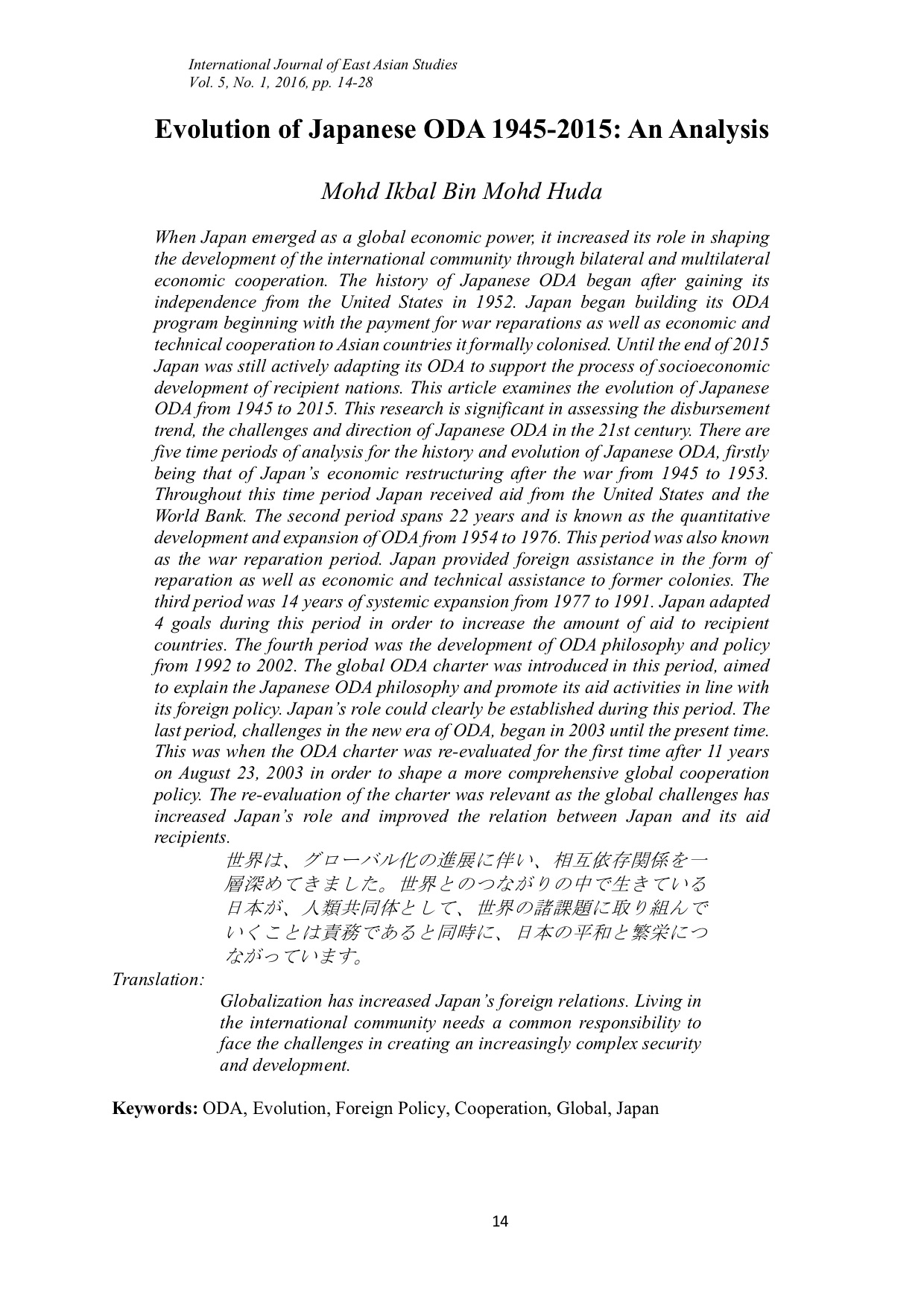Evolution of Japanese ODA 1945-2015: An Analysis
Main Article Content
Abstract
When Japan emerged as a global economic power, it increased its role in shaping the development of the international community through bilateral and multilateral economic cooperation. The history of Japanese ODA began after gaining its independence from the United States in 1952. Japan began building its ODA program beginning with the payment for war reparations as well as economic and technical cooperation to Asian countries it formally colonised. Until the end of 2015, Japan was still actively adapting its ODA to support the process of socioeconomic development of recipient nations. This article examines the evolution of Japanese ODA from 1945 to 2015. This research is significant in assessing the disbursement trend, the challenges and direction of Japanese ODA in the 21st century. There are five time periods of analysis for the history and evolution of Japanese ODA, firstly being that of Japan’s economic restructuring after the war from 1945 to 1953. Throughout this time period, Japan received aid from the United States and the World Bank. The second period spans 22 years and is known as the quantitative development and expansion of ODA from 1954 to 1976. This period was also known as the war reparation period. Japan provided foreign assistance in the form of reparation as well as economic and technical assistance to former colonies. The third period was 14 years of systemic expansion from 1977 to 1991. Japan adapted 4 goals during this period in order to increase the amount of aid to recipient countries. The fourth period was the development of ODA philosophy and policy from 1992 to 2002. The global ODA charter was introduced in this period, aimed to explain the Japanese ODA philosophy and promote its aid activities in line with its foreign policy. Japan’s role could clearly be established during this period. The last period, challenges in the new era of ODA, began in 2003 until the present time. This was when the ODA charter was re-evaluated for the first time after 11 years on August 23, 2003, in order to shape a more comprehensive global cooperation policy. The re-evaluation of the charter was relevant as the global challenges have increased Japan’s role and improved the relation between Japan and its aid recipients.
Downloads
Article Details
Copyright
Submission of a manuscript to the WILAYAH implies that the submitted work has not been published before (except as part of a thesis or report or abstract), that it is not under consideration for publication elsewhere; that all co-authors have approved its publication. The WILAYAH : International Journal of East Asian Studies adopts CC BY license. As such, we would be grateful if an acknowledgement accompanies the republication that the work was originally published in WILAYAH. The editors will ensure digital preservation of access to the journal content by the Journal depository section.
Disclaimer
Although the Department of East Asian Studies is the publisher of the WILAYAH : International Journal of East Asian Studies, the views presented in the WILAYAH are entirely those of the contributors and do not reflect the official stand of the Department of East Asian Studies. The Department does not hold itself responsible for the accuracy of any article published. Publisher and co-publishers assume no responsibility, nor by the editors for any injury and/or damage to persons or property as a result of any actual or alleged libellous statements, infringement of intellectual property or privacy rights, or products liability, whether resulting from negligence or otherwise, or from any use or operation of any ideas, instructions, procedures, products or methods contained in the material therein.

